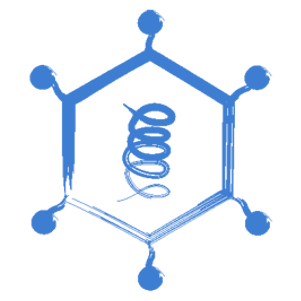|
|
| (14 intermediate revisions by 3 users not shown) |
| Line 1: |
Line 1: |
| − | ===Overview=== | + | {{frontpage |
| − | | + | |pagetitle =Corynebacterium species |
| − | *Common inhabitants of skin and mucous membranes of animals
| + | |pagebody =<div style="text-align: left; direction: ltr; margin-left: 1em;">The ''Corynebacterium'' are small, tough, Gram positive rods. They are common inhabitants of the skin and mucous membranes of animals and cause pyogenic, opportunistic infections.</div> |
| − | *Opportunistic infections
| + | |contenttitle =Content |
| − | *Cause pyogenic infections
| + | |contentbody =<big><b> |
| − | *Most species host specific
| + | <categorytree mode=pages>Corynebacterium species</categorytree> |
| − | | + | </b></big> |
| − | | + | |logo =bugs-logo copy.png |
| − | ===Characteristics=== | + | }} |
| − | | + | [[Category:Bacterial Organisms]] |
| − | *Small, tough, Gram positive rods
| + | [[Category:Gram_positive_bacteria]] |
| − | *Pleomorphic
| + | [[Category:Rods]] |
| − | *Cluster together to resemble Chinese characters - coryneform morphology
| |
| − | *Known as diphtheroids
| |
| − | *Catalase positive, oxidase negative
| |
| − | *Facultative anaerobes
| |
| − | *Require enriched media for growth
| |
| − | *Non-motile
| |
| − | | |
| − | | |
| − | ===Pathogenesis and pathogenicity===
| |
| − | | |
| − | *Pyogenic causing suppurative infections except for ''C. bovis''
| |
| − | *''C. pseudotuberculosis'':
| |
| − | **Facultative intracellular pathogen inside macrophages
| |
| − | **Cell wall lipid
| |
| − | **Produces a phospholipase toxin which hydolyses sphingomyelin in mammalian cell membranes
| |
| − | **Phospholipase may enhance survival and multiplication in host in early stages
| |
| − | *''C. renale''
| |
| − | **Urinary tract pathogens
| |
| − | **Produce urease and hydrolyse urea
| |
| − | **Possess fimbriae for attachment to urogenital mucosa
| |
| − | **Infection when immunity reduced or following tissue damage during parturition
| |
| − | | |
| − | | |
| − | ===''[[Corynebacterium pseudotuberculosis]]''===
| |
| − | | |
| − | | |
| − | | |
| − | ===''Corynebacterium renale''===
| |
| − | | |
| − | *''C. renale, C. pilosum, C. cystitidis''
| |
| − | *Found in the vulva, vagina and prepuce of normal cattle
| |
| − | *Bovine pyelonephritis
| |
| − | **Stress of parturition and short urethra predisposes cows to urinary tract infection
| |
| − | **Cystitis especially with ''C. cystitidis
| |
| − | **Ascending infection from bladder through ureters causes pyelonephritis
| |
| − | **Fever, anoexia, decreased milk production
| |
| − | **Restlessness; kicking of abdomen indicate renal pain
| |
| − | **Dysuria, arched back, bloody urine
| |
| − | **Chronic infection causes extensive renal damage
| |
| − | **Enlarged ureters and kidneys palpated per rectum
| |
| − | **Culture from urine; protein and red blood cells in urine
| |
| − | **Antibiotics e.g. penicillin for at least three weeks
| |
| − | *Ulcerative balanoposthitis (pizzle rot):
| |
| − | **Common in Merino sheep and Angora goats
| |
| − | **Ulceration around prepucial orifice with brown crust, and occasionally on vulva of ewes
| |
| − | **Bacteria hydrolyse urea to ammonia which causes mucosal irritation and ulceration
| |
| − | **High urine urea level, from high protein intake may predispose to condition
| |
| − | **High oestrogen levels in pastures also predisposes
| |
| − | **Castration and heavy wool around the prepuce are risk factors
| |
| − | | |
| − | | |
| − | ===''Corynebacterium bovis''=== | |
| − | | |
| − | *Subclinical mastitis in cattle
| |
| − | *Found in teat cistern
| |
| − | *Causes mild neutrophil response in teat canal of healthy dairy cows and may protect against invasion from more pathogenic bacteria
| |
| − | | |
| − | | |
| − | ===Diagnosis=== | |
| − | | |
| − | *Samples include pus, exudate, affected tissues and urine
| |
| − | *Presence of coryneform organisms in smears
| |
| − | *Culture on blood agar, selective blood agar and MacConkey agar
| |
| − | *Do not grow on MacConkey
| |
| − | *Colony characteristics:
| |
| − | **''C. bovis'': lipophilic bacterium; small, white, dry, non-haemolytic colonies on plates inoculated with bovine milk
| |
| − | **''C. kutscheri'': white colonies; occasionally haemolytic
| |
| − | **''C. pseudotuberculosis'': small, white coloniess surrounded by narrow zone of complete haemolysis; colonies become dry and cream-coloured
| |
| − | **''C. renale'': small, non-haemolytic colonies after 24 hours; pigment produced after 48 hours
| |
| − | *Biochemical reactions:
| |
| − | **Certain strains of ''C. pseudotuberculosis'' reduce nitrates
| |
| − | **All pathogenic strains except ''C. bovis'' produce urease
| |
| − | *Enhancement of haemolysis produced by ''C. pseudotuberculosis'' when inoculated across a streak of ''Rhodococcus equi''[[Category:Bacteria]][[Category:Gram_positive_bacteria]]
| |
